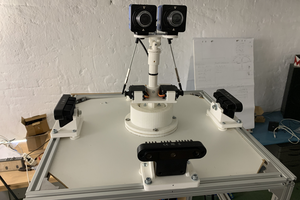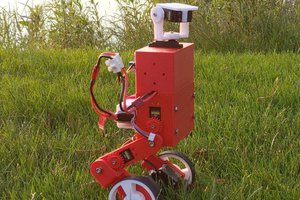To help building a map of a hiking trail the houndbot will need to be driven by remote control one or more times. Then, using the map built up the houndbot could perform the same traverse without any remote control. If the robot was traversing late in the afternoon it could be assumed that humans found might be in distress.
The robot will run ROS which is release under an OSI approved license, depending on the nodes this may well be BSD. http://wiki.ros.org/DevelopersGuide#Licensing

This rather crude image shows how this will work. As folks can register their name and path at lodges currently, the first version might rely on rfid cards that hikers would choose to carry. If horizontal humans are detected the rfid card to be used as either a simple second step "yep it's a person" and then verify that they are in distress (or don't respond which is a soft distress).


 caltadaniel
caltadaniel
 BTom
BTom
 Raspibotics
Raspibotics
 maloneth4
maloneth4